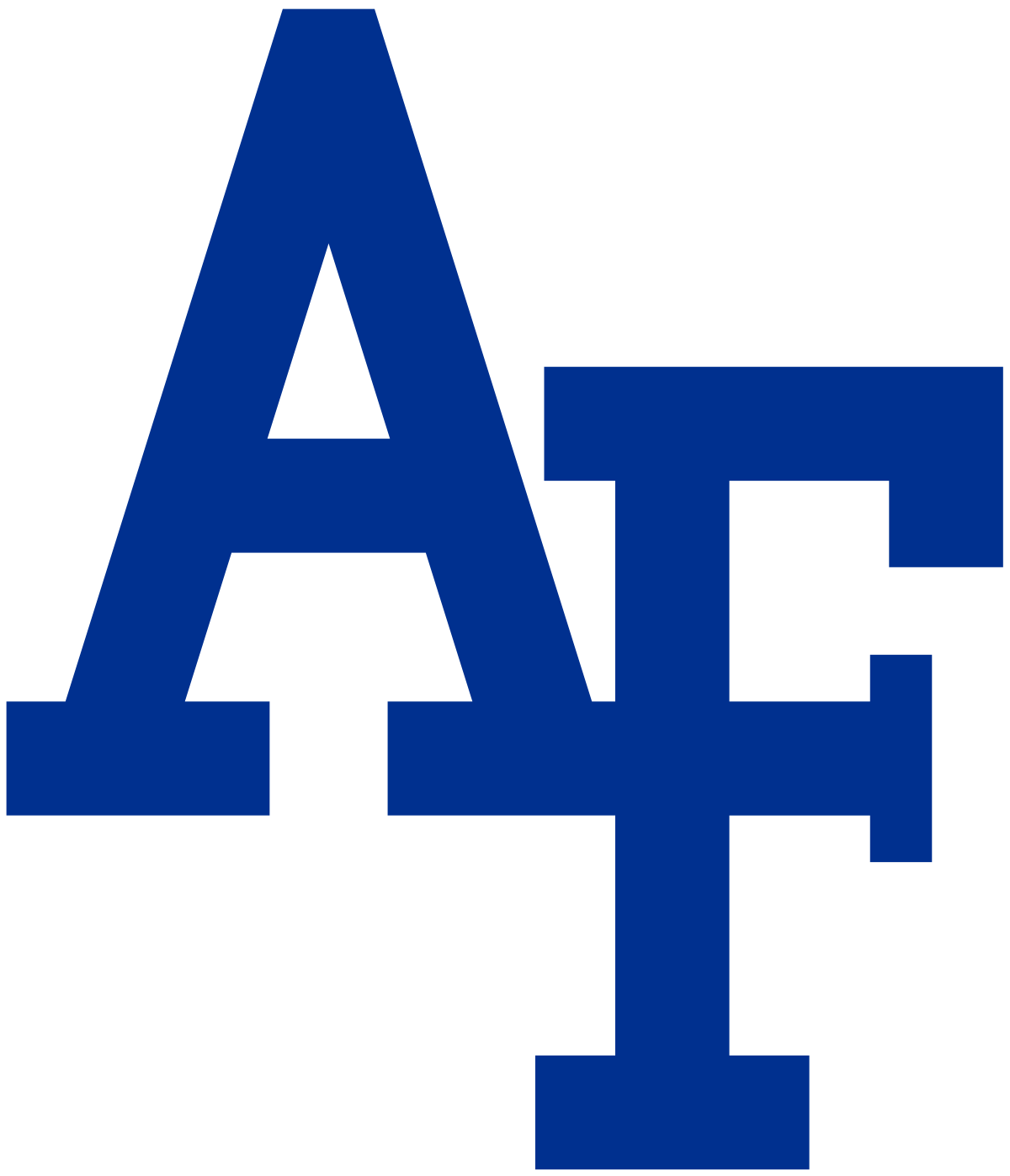BRIDGEPORT, Pa. — The Collegiate Water Polo Association (CWPA) Women’s Collegiate Club Division Spotlight series moves East this week to the women’s Rocky Mountain Division of Colorado School of Mines, Colorado State University, the United States Air Force Academy , the University of Colorado, the University of Denver and the University of New Mexico which competed during the COVID-19 abbreviated 2020 season.
HISTORY: Originally founded in 2011 with programs from the Southwest Division and then eliminated prior to the start of the 2012 season, the Rocky Mountain Division returned in 2015. The newest active division – as only the defunct Great Plains Division which competed for one season in 2014 was created more recently – the Rocky Mountain was primarily comprised of institutions in Colorado (Colorado School of Mines, Colorado State, University of Colorado, University of Denver, United States Air Force Academy) along with one in New Mexico (New Mexico) during the 2020 season.
In the limited history of the division, former division member Utah was the preeminent presence as the Utes hold four titles (2011, 2015, 2016, 2017). The Utah “B” team finished second in the division’s inaugural season in 2011 in a rare “A”-vs.-“B” clash between the Utes’ two programs.
Among active teams, two hold championships as Colorado (2019) and Colorado Mines (2019) have claimed the past two plaques and Women’s National Collegiate Club Championship berths. In addition, Colorado finished second twice (2015, 2016), with the trio of Air Force (2017), Colorado Mines (2018) and Denver (2019) each racking up runner-up placements.
A Rocky Mountain Division team has never advanced to the Women’s National Collegiate Club Championship title game.
Rocky Mountain Division Champion/Runner-Up
- 2011 – University of Utah “A” / University of Utah “B”
- 2015 – University of Utah / University of Colorado
- 2016 – University of Utah / University of Colorado
- 2017 – University of Utah / United States Air Force Academy
- 2018 – University of Colorado / Colorado School of Mines
- 2019 – Colorado School of Mines / University of Denver
THE TEAMS: Focused primarily in Colorado, the Rocky Mountain Division’s six teams have a legacy beyond the borders of the six-team group.
 Colorado School of Mines
Colorado School of Mines
The reigning Women’s Rocky Mountain Division champion thanks to downing the University of Denver for the 2019 championship. the Colorado School of Mines is a public research university in Golden, Colo. The institution is focused on science and engineering, where students and faculty together address the great challenges society faces today−particularly those related to the Earth, energy and environment.
Ranked as the top institution in the world for mineral and mining engineering, Colorado Mines is organized around 16 academic departments and 14 interdisciplinary programs: Advanced Manufacturing; Advanced Energy Systems; Applied Mathematics and Statistics; Chemical and Biological Engineering; Chemistry; Civil and Environmental Engineering; Computer Science; Economics and Business; Electrical Engineering; Energy; Engineering, Design and Society; Geochemistry; Geology and Geological Engineering; Geophysics; GIS and Geoinformatics; Humanities, Arts and Social Sciences; Mechanical Engineering; Metallurgical and Materials Engineering; Military Science/ROTC; Mining Engineering; Nuclear Science and Engineering; Operations Research with Engineering; Petroleum Engineering; Physics; Quantitative Biosciences and Engineering; Space Resources; Underground Construction and Tunneling.
Mines began the world’s first graduate program in space resources in the Fall Semester of 2018, offering both master’s and PhD degrees.
For freshmen entering Fall 2019, Colorado School of Mines received 11,756 applications, accepted 6,240 (53.1%) and enrolled 1,282 (20.5% of those accepted). Men constituted 66.1% of the incoming class, women 33.9%.
Each spring semester, the Colorado School of Mines students and faculty celebrate E-days (or Engineering Days). This three-day festival is kicked off Friday morning with the “Ore Cart Pull”. This event consists of students collectively pulling an ore cart 7.5 miles down Colfax Ave to the Colorado State Capitol in Civic Center Park. Other attractions of this event include a cardboard boat race down nearby Clear Creek, a concert featuring a community-voted artist, and a large fireworks show Saturday night to end the festival, among many other small campus-hosted events.
Freshmen at the Colorado School of Mines are expected, but not required, to participate in the M Climb. During this climb, students carry a ten-pound rock brought from their hometown up Mt. Zion. At the top of the mountain, they are then told to whitewash the M. While also being a mild hazing tradition, students take great pride in this process as it symbolizes the struggle they endure at the school to reach their goals. At graduation time, seniors are invited to return to the M and retrieve a rock to keep. This symbolizes the students taking the knowledge and skills they’ve learned with them into the next stage of their lives.
For more information on the Colorado Mines women’s collegiate club team, contact either Greta Heidrich (club-waterpolo@mines.edu) or Emma Bishop (ebishop@mymail.mines.edu).
- Website (www.minesathletics.com/sports/cwwp)
Colorado State University 
Colorado State University is a public research university in Fort Collins, Colo. The university is the state’s land grant university and the flagship university of the Colorado State University System.
The university has approximately 2,000 faculty in eight colleges and 55 academic departments. Bachelor’s degrees are offered in 65 fields of study, with master’s degrees in 55 fields. Colorado State confers doctoral degrees in 40 fields of study, in addition to a professional degree in veterinary medicine.
Colorado State is located at the base of the Front Range of the southern Rocky Mountains. The university’s 583-acre main campus is located in central Fort Collins, and includes a 101-acre veterinary teaching hospital. CSU is also home to a 1,438-acre Foothills Campus, a 1,575-acre agricultural campus and the 1,177-acre Pingree Park mountain campus. CSU uses 4,043 acres for research centers and Colorado State Forest Service stations outside of Larimer County.
Colorado State offers 150 programs of study across 8 colleges and 55 departments. In addition to its notable programs in biomedical sciences, engineering, environmental science, agriculture, and human health and nutrition, CSU offers professional programs in disciplines including business, journalism, and construction management as well as in the liberal and performing arts, humanities, and social sciences. CSU also offers bachelor’s degrees, graduate degrees, certificates, and badges online. CSU awarded 6,090 degrees in 2009–2010, including 4,336 bachelor’s degrees, 1,420 master’s degrees, 203 doctoral degrees, and 131 Doctor in Veterinary Medicine degrees.
The school;’s mascot of the Ram is the latest edition of an image for Colorado State. In 1909, there was a black bear cub that served as the mascot – but he disappeared the same year. He was replaced by Peanuts the Bulldog in 1912. Peanuts was purchased by a student and would roam around campus, he was fed peanuts by the students, which lead to his nickname. Peanuts was poisoned by University of Colorado and died in 1918. After Peanuts’ death, an alumnus donated a different Bulldog named Gallant Defender. The first ram to be mascot of Colorado State University was Buck, introduced in 1946 and the mascot has remained since that time.
For more information on the Colorado State women’s collegiate club team, contact Jadelyn Lippmann (lippmann@rams.colostate.edu).
- Facebook (@wpolocsu)
- Website (csurec.colostate.edu/sport-clubs/water-polo-womens/)
 United States Air Force Academy
United States Air Force Academy
The United States Air Force Academy has advanced to its division title game five times with a victory in 2005 (Southwest Division) and runner-up finishes in 2002, 2006, 2009 (Southwest Division) and 2017 (Rocky Mountain Division).
A military academy for officer cadets of the United States Air Force and United States Space Force, the Air Force Academy is immediately north of Colorado Springs, Colorado. Graduates of the academy’s four-year program receive a Bachelor of Science degree and are commissioned as second lieutenants in the U.S. Air Force or U.S. Space Force.
Admission is extremely competitive, with nominations divided equally among Congressional districts. Recent incoming classes have had about 1,200 cadets; since 2012, around 20% of each incoming class does not graduate. During their tenure at the Academy, cadets receive tuition, room and board, and a monthly stipend all paid for by the Air Force. On the first day of a cadet’s second class year, cadets commit to serving a number of years as a commissioned officer in the Air Force or Space Force. Non-graduates after that point are expected to fulfill their obligations in enlisted service or pay back full tuition. The commitment is normally five years of active duty and three years in the reserves, although it has varied depending on the graduate’s Air Force Specialty Code.
The program at the academy is guided by the Air Force’s core values of “Integrity First, Service Before Self, and Excellence in All We Do“, and based on four “pillars of excellence”: military training, academics, athletics and character development. In addition to a rigorous military training regimen, cadets also take a broad academic course load with an extensive core curriculum in engineering, humanities, social sciences, basic sciences, military studies and physical education. All cadets participate in either intercollegiate or intramural athletics, and a thorough character development and leadership curriculum provides cadets a basis for future officership. Each of the components of the program is intended to give cadets the skills and knowledge that they will need for success as officers.
The United States Air Force Academy Preparatory School (usually referred to as the “Prep School”) is a program offered to selected individuals who were not able to obtain appointments directly to the Academy. The program involves intense academic preparation (particularly in English, math and science), along with athletic and military training, meant to prepare the students for appointment to the academy. A high percentage of USAFA Preparatory School students (known as “Preppies”) earn appointments to the academy following their year at the Prep School.
The student body of the academy is known as the Cadet Wing. The students, called “cadets”, are divided into four classes, based on their year in school, much like a civilian college. They are not referred to as freshmen, sophomores, juniors and seniors, however, but as fourth-, third-, second- and first class cadets, respectively. Fourth class cadets (freshmen) are often referred to as “doolies,” a term derived from the Greek word δοῦλος (“doulos”) meaning “slave” or “servant.” Members of the three lower classes are also referred to as “4 degrees,” “3 degrees” or “2 degrees” based on their class. First-class cadets (seniors) are referred to as “firsties.” In the military structure of the Cadet Wing, first class cadets hold the positions of cadet officers, second class cadets act as the cadet non-commissioned officers and third class cadets represent the cadet junior non-commissioned officers.
The Cadet Wing is divided into four groups, of ten cadet squadrons each. Each cadet squadron consists of about 110 cadets, roughly evenly distributed among the four classes. Selected first-, second- and third-class cadets hold leadership, operational and support jobs at the squadron, group and wing levels. Cadets live, march and eat meals with members of their squadrons. Military training and intramural athletics are conducted by squadron as well. Each cadet squadron and cadet group is supervised by a specially selected active duty officer called an Air Officer Commanding (AOC). In the case of a cadet squadron, the AOC is normally an active duty Air Force major. Occasionally, officers of equivalent rank from the Army, Navy, or Marines may be selected as an AOC for a squadron while on active duty at the Academy. For a cadet group, the AOC is normally an active-duty lieutenant colonel. These officers have command authority over the cadets, counsel cadets on leadership and military career issues, oversee military training and serve as role models for the future officers. In addition to an AOC, cadet squadrons and groups are also supervised by an active duty non-commissioned officer known as an Academy Military Trainer (AMT), who fulfills a similar job as the AOC.
The Air Force Academy is an accredited four-year university offering bachelor’s degrees in a variety of subjects. Active-duty Air Force officers make up approximately 70 percent of the faculty, with the balance long-term civilian professors, visiting professors from civilian universities and instructors from other U.S. and allied foreign military services. In recent years, civilians have become a growing portion of senior faculty.
All graduates receive a Bachelor of Science degree, regardless of major, because of the technical content of the core requirements. Cadets may choose from a variety of majors, including engineering, the basic sciences, social sciences and humanities, as well as in a variety of divisional or inter-disciplinary subjects. The academic program has an extensive core curriculum, in which all cadets take required courses in the sciences, engineering, social sciences, humanities, military studies and physical education. Approximately sixty percent of a cadet’s course load is mandated by the core curriculum. As a result, most of a cadet’s first two years are spent in core classes. While core requirements remain significant during the third and fourth years, cadets have more flexibility to focus in their major areas of study, allowing them to participate in international and inter-service Academy exchange programs.
Traditionally, the academic program at the Air Force Academy (as with military academies in general) has focused heavily on science and engineering, with the idea that many graduates would be expected to manage complex air, space and information technology systems.
To be eligible to enter the Academy, a candidate must:
- Be a citizen of the United States (unless nominated by an official of a country invited by the Department of Defense)
- Be unmarried with no dependents
- Be of good moral character
- Be at least 17, but less than 23 years of age by 1 July of the year of entry
- Meet high leadership, academic, physical and medical standards
In addition to the normal application process, all candidates must secure a nomination to the academy, normally from a U.S. Senator or U.S. Representative. Each member of Congress and the Vice President can have five appointees attending the Air Force Academy at any time. The process for obtaining a congressional nomination is not political and candidates do not have to know their senator or representative to secure a nomination. Additional nomination slots are available for children of career military personnel, children of disabled veterans or veterans who were killed in action, or children of Medal of Honor recipients. The admissions process is a lengthy one and applicants usually begin the paperwork during their junior year of high school
For more information on the Air Force women’s collegiate club team, contact Madeline Pautsch (mjpautsch@gmail.com)
University of Colorado 
The 2018 Rocky Mountain Division Champion and runner-up in 2015 and 2016, the Buffaloes of the University of Colorado are a three-time division champion with Southwest Division crowns in 1997 and 2003.
Colorado, which finished second in the Southwest Division during the 1998, 2008 and 2010 seasons, is the flagship university of the University of Colorado System in Boulder, Colo. Founded in 1876, five months before the Colorado was admitted to the United States, the university has more than 33,000 undergraduate and graduate students. It offers more than 2,500 courses in more than 150 areas of study through its nine colleges and schools.
The main CU Boulder campus is located south of the Pearl Street Mall and east of Chautauqua Auditorium. It consists of academic and residential buildings as well as research facilities. The East Campus is about a quarter mile from the main campus and is composed mainly of athletic fields and research buildings. CU Boulder’s campus has been ranked as one of the most beautiful college campuses in the United States by Travel + Leisure and Condé Nast Traveler.
The University of Colorado Boulder is divided into several colleges and schools. While the College of Arts and Sciences is by far the largest, the university also consists of the College of Engineering and Applied Sciences, the Program in Environmental Design, Education, Music, Law, and the Leeds School of Business, plus a new College of Media, Communication and Information that debuted in 2014. Most, if not all, of these colleges and schools also incorporate masters and doctorate level degree programs. At the University, there are currently approximately 3,400 courses available in over 150 disciplines comprising 85 majors ranging from Accounting to Women’s Studies.
University of Colorado School of Law is the smallest and most selective of the colleges. The Wolf Law Building, the new home of the Law School, was dedicated on September 8, 2006, by United States Supreme Court justice Stephen Breyer.
The Leeds School of Business has an enrollment of 3,300 students including undergraduates, master’s candidates, and Ph.D. candidates. The undergraduate program ranks 39th in the country and the undergraduate entrepreneurship program ranks 14th in the nation. The MBA program ranks 26th among all public universities.
Undergraduates who seek an academic challenge may participate in CU’s Honors Program. Begun in 1931, the Honors Program currently consists of the top ten percent of incoming freshmen and participating undergraduates with a 3.3 GPA or greater (on a 4.0 scale). The program offers over 40 honors classes each semester taught by tenured or tenure-track professors and limited to class sizes of 15 students. Honors students also have the opportunity to graduate with honors, high honors, and highest honors, by writing and defending a thesis during their senior year. The program extends into the residence halls through the Kittredge Honors Program. The Presidents Leadership Class is a program for top scholars at the University of Colorado Boulder. Scholars participate in a four-year leadership development program. The program provides opportunities to the top fifty students at CU from every major and discipline.
In terms of admissions, Colorado received 31,326 freshmen applications and admitted 24,941 (80% acceptance rate). Student population is predominantly caucasian and the majority of students are Colorado residents.
For more information on the Colorado women’s collegiate club team, contact either Madeline Morgan (mamo5535@colorado.edu), Emmaline Bradley (embradleyem@gmail.com) or the team’s general account (wbuffpolo@gmail.com).
- Facebook (@CUBoulderWaterPolo)
- Website (www.colorado.edu/recreation/sport-clubs/list-sport-clubs/water-polo-womens)
University of Denver
The runner-up at the 2019 Rocky Mountain Division Championship, the University of Denver has risen to become a title threat in the women’s collegiate club ranks.
“I have enjoyed the friendships and team bonding that has resulted from joining the water polo team,” notes junior Nancy Hollingsworth.
Denver, which views the United States Air Force Academy and the Colorado School of Mines as the program’s rivals in the division to reach the program’s goal of winning the title and earning a spot at the Women’s National Collegiate Club Championship, is viewed as a family to the club’s membership.
Per junior Madison Pollina, “Joining DU Club Women’s Water Polo has allowed me to find a little community and family at school.”
Sophomore River Thomas echoes the sentiment, “I love the community that the club brings,” while junior Meijia Oltman adds, “I enjoy water polo at DU because I’m getting a good workout while having fun with some pretty cool people.”
A private research university in Denver, Colo., the school was founded in 1864 and rates as the oldest independent private university in the Rocky Mountain Region of the United States. Denver enrolls approximately 5,700 undergraduate students and 7,200 graduate students. The 125-acre main campus is a designated arboretum and is located primarily in the University Neighborhood, about five miles south of downtown Denver.
Of the undergraduate student body: the ratio of women to men was 54% women to 46% men and the ratio of race/ethnicity was 68.0% White, 2.2% Black, 12% Hispanic, 3.9% Asian or Pacific Islander, and >1% American Indian, with roughly 5% mixed. Roughly over 53% of the incoming freshman class was in the top 10% of their graduating high school class. Denver likes to promote inclusiveness; therefore, there are numerous programs and people available to help transfer (or international students). 6% and 5% of the undergraduate and graduate student bodies were international, respectively. Students in the graduate programs represent over half of the total enrollment of the school.
The University of Denver has almost 70.2% of its undergraduate student body study abroad before graduation, placing it first in the nation among all doctoral and research institutions in percentage of undergraduate students participating in study abroad programs. The top destinations of DU students are the United Kingdom, Spain and Italy, however many students go to universities in Australia, New Zealand and Scotland.
The school’s mascot since 1925 has been the Pioneers. Previous mascot characters were Pioneer Pete (1920s to 1968), Denver Boone (1968 to 1998) and Ruckus the Red-Tailed Hawk (1998 to 2007) as there is not a character for Denver at this time.
For more information on the Denver women’s collegiate club team, contact Elizabeth Witting (DUWWP1@gmail.com).
- Facebook (@duclubwomenswaterpolo)
- Website (ritchiecenter.du.edu/sports/2020/5/5/adult-water-polo.aspx)
 University of New Mexico
University of New Mexico
The University of New Mexico women’s club team returned to the water in 2018 following an eight-year hiatus.
A public research university in Albuquerque, N.M., the school was founded in 1889 and offers bachelor’s, master’s, doctoral, and professional degree programs.
New Mexico offers more than 215-degree and certificate programs, including 94 bachelor, 71 masters and 37 doctoral degrees, through 12 colleges and schools. The institution has both a school of medicine and a school of law in addition to majors in management, education, fine arts, nursing, pharmacy, engineering, architecture & planning and public administration among others.
The University of New Mexico Model United Nations, known as World Affairs Delegation or WAD, team is one of the top ranked teams in the country, with multiple awards at several different competitions, most notably, the Harvard World Model United Competition in Geneva, Switzerland and Puebla, Mexico. Most recently, the team won the Diplomacy Award and The Resolution Fellowship, both in Panama City, Panama. They have also competed and won awards at the St. Mary’s University Model Organization of American States Conference.
Traditions at the school include:
- The Hanging of the Greens is a celebration held in early December for the holiday season, when the campus is decorated with thousands of farolitos (a small paper lantern) and a procession of carolers winds through the campus to the University House, which is opened for visitors and where cocoa and bizcochitos (a crisp cookie) are served.
- Red Rally is a large bonfire and rally held on the Thursday before the football game with UNM’s rival New Mexico State University. During Red Rally, a large effigy of an Aggie, the mascot of NMSU, is burned to the ground.
- UNM Fiestas are an end-of-the year celebration held in the spring which includes a community service event called Spring Storm and a large concert.
For more information on the New Mexico women’s collegiate club team, contact Andrea Loya (aloya2@unm.edu).
- Facebook (@unmwaterpoloclub)
- Instagram (@unmwaterpolo)
- Twitter (@unmwaterpolo)
- Website (unmwaterpolo.weebly.com)

